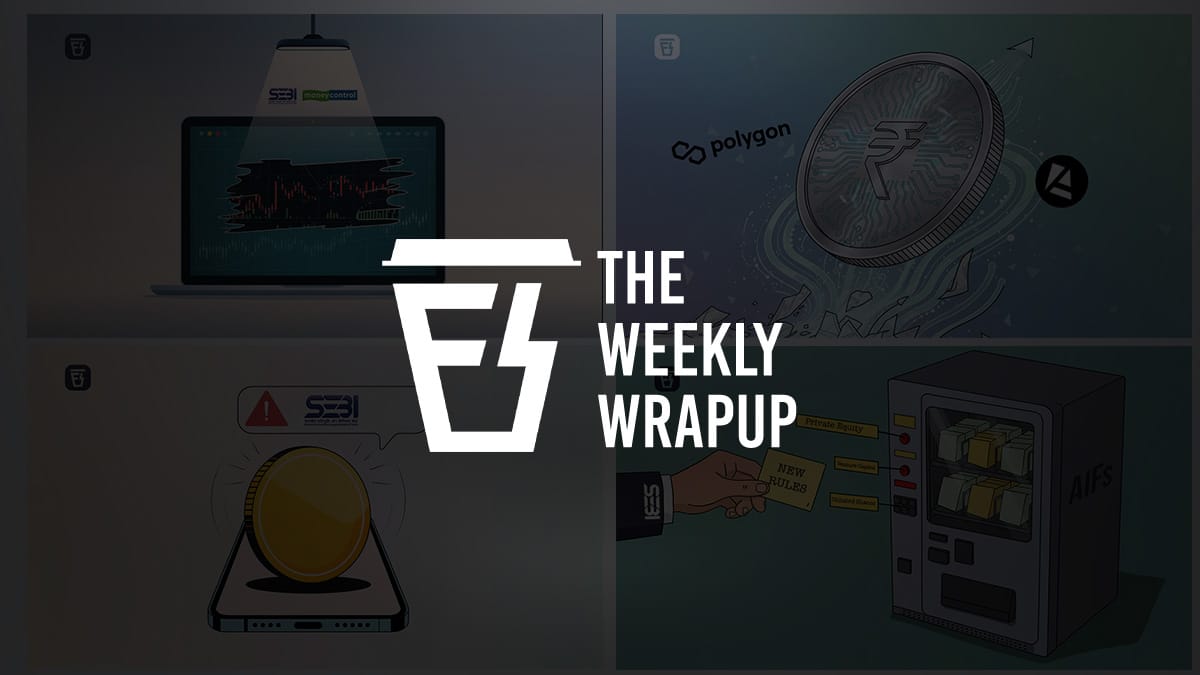The Tata Trusts Saga, digital gold and more….

In this week’s wrapup, we broke down the Tata Trusts Saga, the PhysicsWallah IPO, explained why India wants its own Stablecoin, SEBI’s new rules on Alternative Investment Funds and the recent commotion about digital gold.
And in this week’s Markets edition, we did an explainer on the prop trading scam that Moneycontrol recently uncovered. Click here to read the full markets story.
Also, here's a quick announcement before we begin – Finshots Idea Lab is back!
After the massive love and excitement of Season 1 of our national-level case competition, we’re back with an even bigger challenge! Compete in 3 rounds to solve real-world business problems and receive cash prizes worth ₹2.25 lakh, exclusive goodies and a lot more!

Know more about the competition and apply here.
And with that out of the way, let’s take a look back at what we wrote this week.
The Tata Trusts Saga Explained
A little over a year ago, the world mourned the loss of Ratan Tata. While the world was mourning his loss, the empire behind the Tata name was learning to move on without him.
Noel Tata took over as chairman of the trusts, and what followed was a boardroom drama of the ages. And because of the size and importance of Tata Trusts umbrella of companies, this seat is one of the most important in Corporate India.
While the boardroom drama started over a year ago, another timer was ticking the background: the listing of Tata Trusts. And nobody needed this listing as much as the SP Group, with a looming debt repayment of billions of dollars coming close.
Eventually, the boardroom battle caught the government’s attention, and it had to ask the folks at Tata Trusts to settle the dispute, because stability became a national interest.
We walk you through the full saga in our Monday story here.
The PhysicsWallah IPO Explained
Education in India used to be limited to classrooms, dusty chalkboards and tuition centres. The IT boom changed that, and with YouTube, one teacher could teach millions of students. Suddenly the reach was limitless. And on the back of that revolution, was one YouTube channel called Physics Wallah.
Built entirely on Alakh Pandey’s blackboard-style teaching, it evolved into a full-fledged edtech brand that today commands one of the most loyal student communities in the country.
And now, PhysicsWallah is heading to the public markets. In a country where test prep is a lucrative business worth ₹1 lakh crore, PhysicsWallah chose a different path. It kept courses extremely affordable, expanded into hybrid learning early, and focused primarily on Tier-2 and Tier-3 towns where the demand for test prep is deepest.
And the bet paid off, with revenues climbing to over ₹3,000 crores in FY25. Their offline business seems to be working but the risks are looming — from classroom operations to teacher attrition as high as 30%. Can PhysicsWallah maintain the course and capture the test prep industry?
Read our Tuesday story here for the full coverage.
India wants its own stablecoin?
Our relationship with crypto has always been bittersweet. While the government doesn’t necessarily like crypto, it doesn't mind taxing it either. But now, the blockchain giant Polygon is working with Anq, an Indian fintech startup, on what might be India’s first ever stablecoin.
Stablecoins already exist for other currencies like the dollar and the fact that they’re pegged to actual fiat currencies or precious metals makes them less volatile, hence the name ‘stablecoins’. But the surprising part of it is how Indians are the biggest holders of these stablecoins, despite not having our own.
This dollar denominated stablecoin dominance could lead to us having our own stablecoin, but not without challenges with regulation and uncertainty with adoption.
In our Wednesday story, we breakdown what it takes and the road ahead.
What SEBI’s new AIF rules mean
Mutual funds are the easiest funds to understand. You and a bunch of others pool in money, and no matter how much it is, each of you get a percentage return of your own investment.
Alternative Investment Funds or AIFs are a lot different than that. It’s a high stakes table, where the entry bar is high and so are the risks. Which meant that the rules weren’t even across the table, going against what ‘funds’ are actually supposed to do. And that’s why SEBI wanted to change that.
But what does ‘change’ mean exactly, when not all AIFs are made the same way?
What about existing ‘rules’ (PPMs) for the active schemes? And what does ‘commitment’ actually mean now? These uncertainties led to a difference in what the rules say and what’s practiced in real life.
SEBI answered all this and more in its consultation paper on AIF and we broke it down in our Thursday newsletter here.
How digital gold became India’s favourite unregulated investment
For years now, digital gold has quietly become one of India’s favourite ways to buy the shiny yellow metal. The convenience made it irresistible — open an app, start with as little as ₹1, and you suddenly feel like you’ve taken your first step toward owning gold.
But last week, SEBI reminded everyone of something crucial. Digital gold isn’t regulated. Which means you have no guaranteed way of knowing whether the gold you’ve “bought” can actually be redeemed for physical gold.
No regulator — neither SEBI nor the RBI, oversees it. No one verifies how much gold these companies truly hold. And you can imagine the chaos if everyone tried redeeming their digital balances at once.
So why wasn’t digital gold regulated all this while? And if it wasn’t, how did it still end up becoming such a huge investment product that so many Indians love?
Find out in our Friday story here!
Note: An earlier version of this edition mistakenly stated that SEBI uncovered the prop-trading scam. This has now been corrected.
Liked this week’s wrapup?
